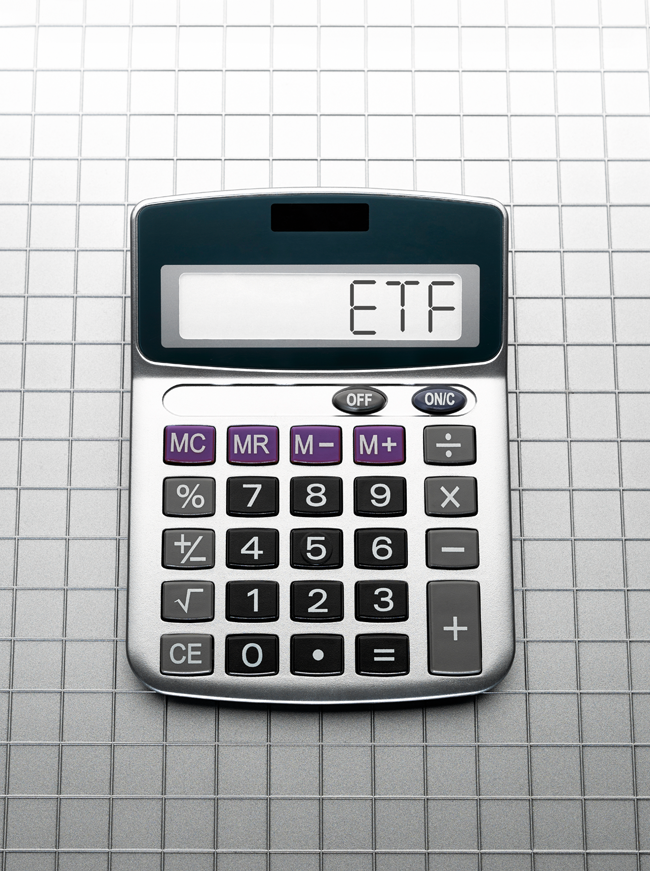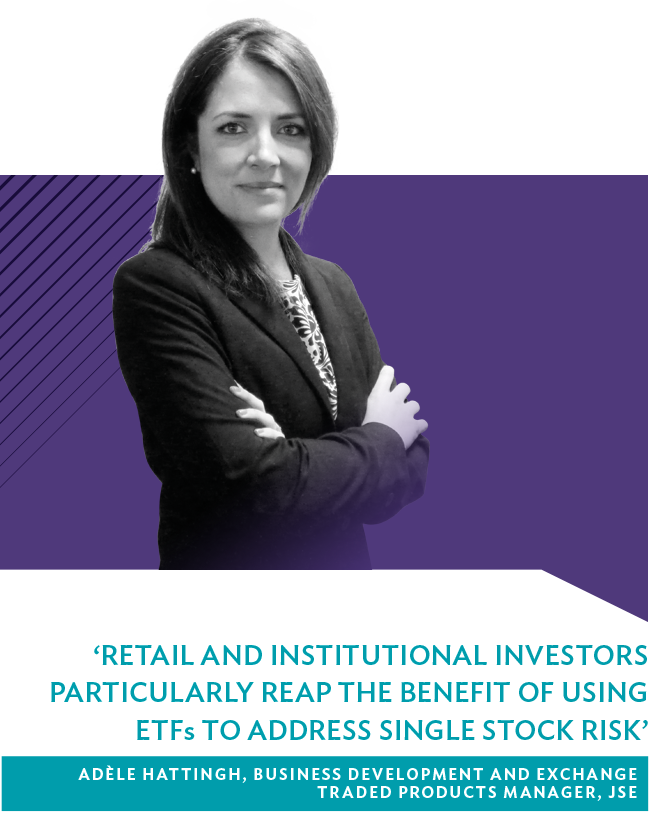Last year saw the highest number of exchange traded fund (ETF) listings since the introduction of the first ETF on the JSE in 2000. The majority of the 15 listings are derived from foreign equity exposure, providing the widest variety of offshore investment options in the local ETF market to date.
Adèle Hattingh, JSE Business Development and Exchange Traded Products Manager, attributes the increased ETF listings to an exchange control circular issued by the South African Reserve Bank (SARB) last February. ‘The circular allowed locally registered collective investment scheme companies to inward list foreign referenced asset ETFs, therefore not restricting these funds in terms of their offshore limits.
‘This put the JSE in a unique position, for not only do we offer our retail and institutional investors a vast variety of different asset classes – both local and international – and factor-based ETFs, but we are the only exchange in the country to offer this listing and trading service to ETF issuers and investors, respectively.’
ETFs are traded like an ordinary share with the added benefit of a market maker. ETF issuers appoint a JSE broker as a market maker, and it is their role to ensure they are available to buy the ETFs that an investor wishes to sell, and to sell those to an investor that wishes to buy.
All ETFs disclose the index and underlying assets they are invested in, ensuring transparency. ETFs offer the benefit of offering exposure to a range of asset classes rolled into a single investment, meaning the investor does not have to buy the fund’s underlying assets – for example, companies or bonds – individually, thereby diluting risk and reducing cost for the investor.
In total, there are 73 ETFs listed on the exchange, with a market cap of close to R73 billion. Included are 17 different international equity ETFs, four international bond, three international property and a single African equity ETF. In addition, confirms Hattingh, a range of interesting smart beta ETFs, which provide investors with much more than traditional market cap-weighted, listed index products, are available. The range of popular commodity ETFs – namely gold, platinum, rhodium and palladium – can also add another dimension to investors’ portfolios.
With 10 listings already recorded in the first quarter of 2018, expectations are that ETF popularity will continue, and not just off the back of the SARB circular, as Hattingh explains. ‘Foreign feeder fund ETFs from issuers striving to reduce costs, and an increase in the introduction of smart beta or factor-based investing ETFs are all contributing. Factors such as low volatility, value, momentum and quality are also really opening up investors’ ability to improve their returns – reducing risk and improving diversification,’ she says.
‘Diversification also saves the investor a great deal of time when researching ETF investments. Retail and institutional investors particularly reap the benefit of using ETFs to address currency and single stock risk. They can also make allowance for core-satellite investment strategies so portfolio managers have the ability to trade ETFs tactically.’
Champions of ETF precedents since the SARB circular include Cloud Atlas when it bought the first African equity (ex-SA) ETF in April last year; Ashburton, which introduced the first ETF to track the S&P Global 1200 Index worldwide, and offered the first global bond ETF on the JSE when it listed the Ash-burton World Government Bond ETF; and similarly Satrix, which pioneered the first Nasdaq ETF (the Satrix Nasdaq 100) and was also the first local issuer to bring the feeder fund structure ETFs to the market.
‘Offering investors choice, access and innovative products is the cornerstone of our business,’ says Hattingh, adding that ETFs offer so much more than market return (beta). ‘Effectively they can combine the characteristics of passive and active investing, using a full range of building blocks.’









